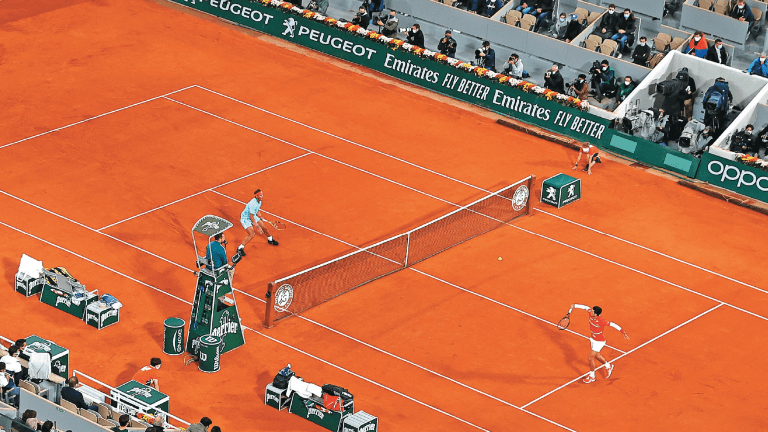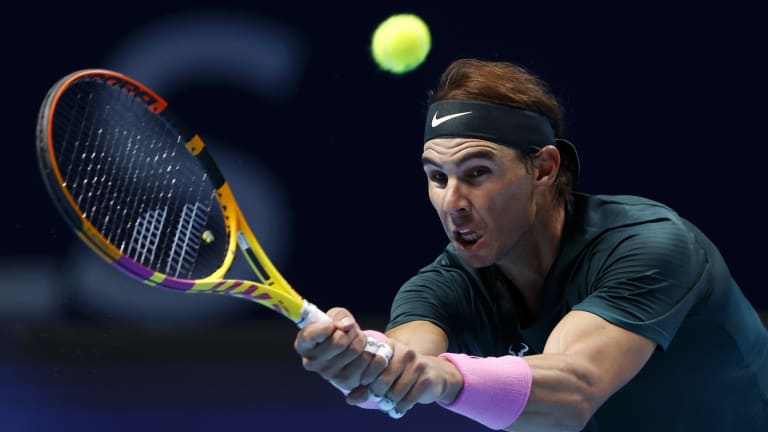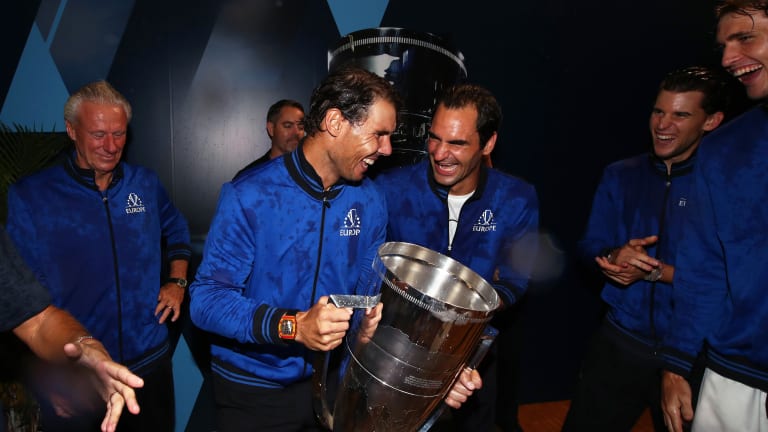Man for the moment: What Rafael Nadal means to the game, and his fans
By Jan 04, 2021Roland Garros
Rafael Nadal to be honored with 'exceptional' tribute on opening day of Roland Garros
By Apr 17, 2025Lifestyle
Rafael Nadal’s shirt from his career Grand Slam-completing victory in 2010 is available for auction
By Apr 10, 2025Social
Watch Rafael Nadal stress out over Real Madrid, then celebrate a dramatic victory
By Apr 02, 2025Social
Rafael Nadal congratulates academy students Eala, Wong on big Miami wins
By Mar 22, 2025Social
"Hola TikTok!" Rafael Nadal racks up 3 million views
By Mar 15, 2025Social
Toni Nadal calls out ‘not-so-clean players’ for taking shots at Jannik Sinner
By Feb 27, 2025Tennis.com Interview
Rodrigo Pacheco Mendez: inspired by Nadal, dreams of facing Sinner, Mexico's tennis answer?
By Feb 26, 2025The Business of Tennis
Rafael Nadal set for $94-million profit after selling part of his stake in tennis academy
By Feb 11, 2025Lifestyle
Roger Federer’s Wimbledon-winning racquet sells for more than $100,000 in tennis auction
By Feb 10, 2025Man for the moment: What Rafael Nadal means to the game, and his fans
The Spaniard may not see himself as a role model, but his unique approach to sport and life has helped him forge a strong bond with his supporters.
Published Jan 04, 2021
Advertising

Man for the moment: What Rafael Nadal means to the game, and his fans
Advertising

Man for the moment: What Rafael Nadal means to the game, and his fans
Advertising

Man for the moment: What Rafael Nadal means to the game, and his fans
© Getty Images
Advertising

Man for the moment: What Rafael Nadal means to the game, and his fans
© Getty Images for Laver Cup